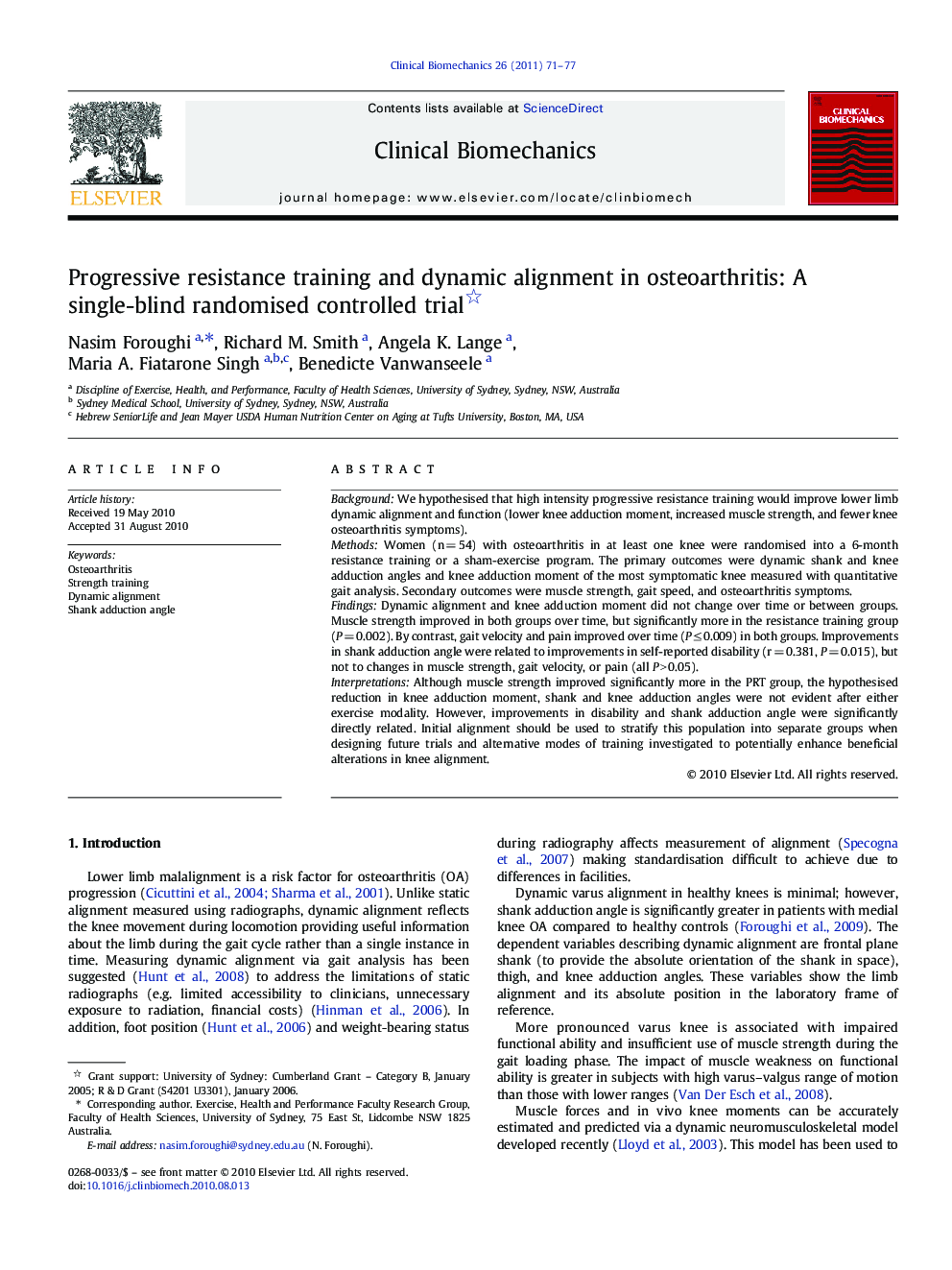| Article ID | Journal | Published Year | Pages | File Type |
|---|---|---|---|---|
| 4051008 | Clinical Biomechanics | 2011 | 7 Pages |
BackgroundWe hypothesised that high intensity progressive resistance training would improve lower limb dynamic alignment and function (lower knee adduction moment, increased muscle strength, and fewer knee osteoarthritis symptoms).MethodsWomen (n = 54) with osteoarthritis in at least one knee were randomised into a 6-month resistance training or a sham-exercise program. The primary outcomes were dynamic shank and knee adduction angles and knee adduction moment of the most symptomatic knee measured with quantitative gait analysis. Secondary outcomes were muscle strength, gait speed, and osteoarthritis symptoms.FindingsDynamic alignment and knee adduction moment did not change over time or between groups. Muscle strength improved in both groups over time, but significantly more in the resistance training group (P = 0.002). By contrast, gait velocity and pain improved over time (P ≤ 0.009) in both groups. Improvements in shank adduction angle were related to improvements in self-reported disability (r = 0.381, P = 0.015), but not to changes in muscle strength, gait velocity, or pain (all P > 0.05).InterpretationsAlthough muscle strength improved significantly more in the PRT group, the hypothesised reduction in knee adduction moment, shank and knee adduction angles were not evident after either exercise modality. However, improvements in disability and shank adduction angle were significantly directly related. Initial alignment should be used to stratify this population into separate groups when designing future trials and alternative modes of training investigated to potentially enhance beneficial alterations in knee alignment.
